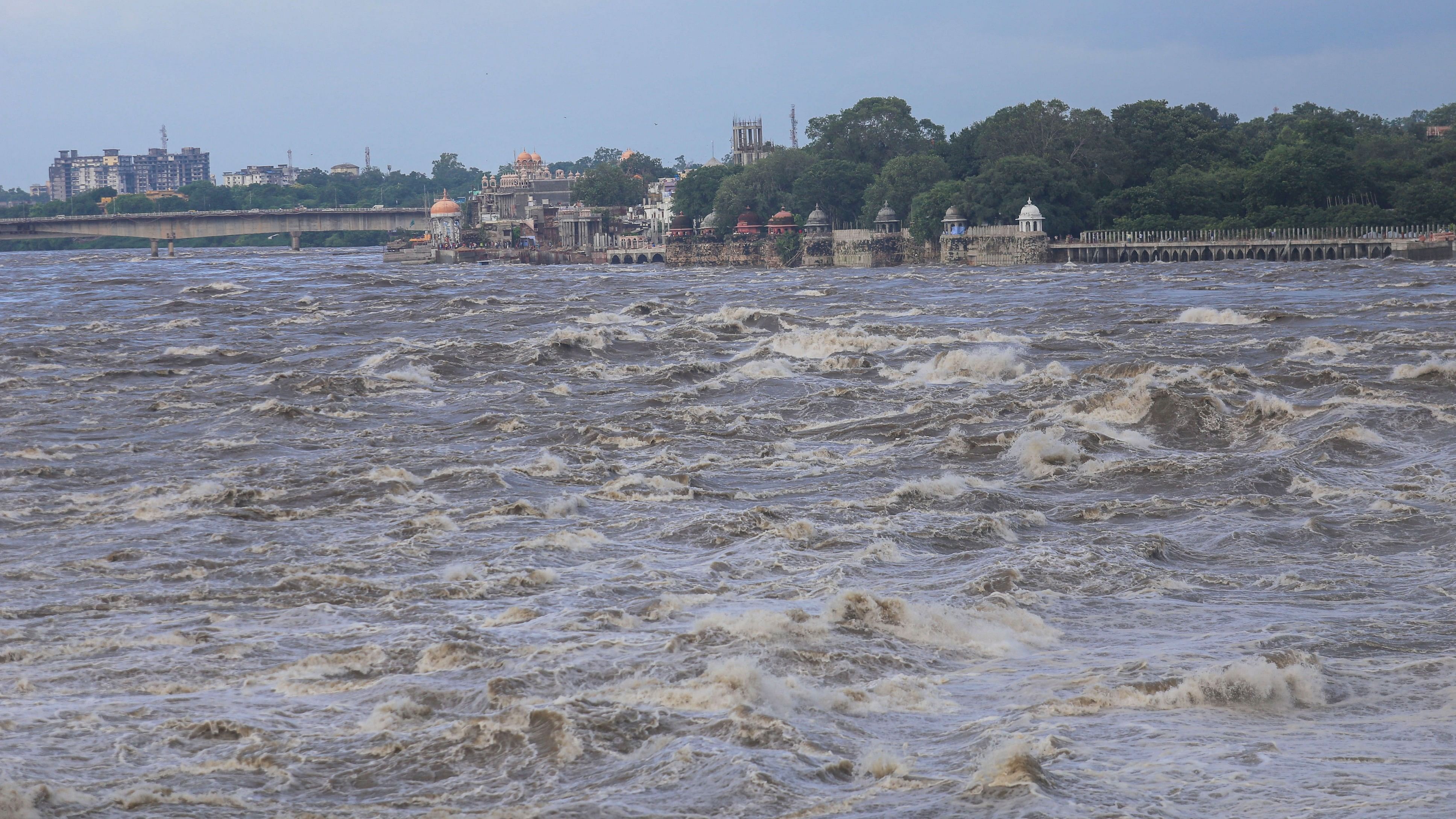
File photo of swollen Chambal river
Credit: PTI Photo
The recognition of Etawah Lion Safari in Western Uttar Pradesh expired in August 2022. I recently paid a visit on behalf of the Central Zoo Authority for its evaluation. Besides the lion safari, I also took the time to explore the ravine areas of the Chambal and Agra districts of Uttar Pradesh and the Bhind district of Madhya Pradesh. These areas serve as catchments of five important rivers: Yamuna, Chambal, Sindh, Pahunch, and Qari, all of which eventually merge into the Yamuna. Chambal and Yamuna are the main water sources for drinking and irrigation.
The water in the River Chambal is far cleaner than the Yamuna’s. Although Yamuna’s water originates from snow melting in the Himalayas (Yamunotri), it passes through heavily polluted and densely populated areas such as Delhi and Agra, accumulating considerable sewage.
In contrast, Chambal’s source is rainwater trapped in the roots of trees in rich forests around Indore, Madhya Pradesh. Therefore, preserving the vegetation in the catchment areas where tree roots act as sponges is crucial, as well as storing water during the rainy season and releasing it during dry periods to maintain perennial water flow in streams and tributaries.
Since ravine areas are the catchments of these rivers, preserving native vegetation and focusing on restoring it is essential. Deep ravines are formed in the area owing to continuous soil erosion during heavy rains, which provided hideouts for the dacoits.
The ravines’ configuration is soft soil held in layers formed by the undulation of kankar pans, which can be observed in the river embankments. Unfortunately, most broadleaved vegetation in the area has been replaced by the invasive species Prosopis juliflora.
Etawah Lion Safari was conceived in 2013 during Akhilesh Yadav’s tenure as UP’s chief minister. His native village, Saifai, has received a lion’s share of the fruits of development. It has an airport where chartered planes land, a hospital, a medical university, schools and colleges, and a stadium.
Yadav wanted to establish a zoo nearby, and the nearest forest area suitable for the project was the Reserved Forests in ravine areas close to Etawah town, a place 20 km from Saifai.
A 350-ha forest area through ravines on the left bank of the Yamuna was enclosed for the project, and a master plan comprising safaris of lions, leopards, sloth bears, deer, and antelopes was approved and implemented. These safaris were opened to the public in 2019. The Master Plan has been recently revised to include even a tiger safari. One of the best facilities for lion breeding has also been created. The management has acquired animals from Gujarat and several other zoos in the country and maintained the population of physically, genetically, and behaviorally healthy animals.
The best work done in the project is the eradication of Prosopis juliflora, and its place is taken over by broadleaved native species such as Capparis spp., Salvadora oleides, Salvadora persica, Ehretia laevis, Balanites aegyptica, Grewia hirsute, Grewia tenax, Zizyphus oenoplia, Zizyphus jujuba, Bombax ceiba, etc.
There has been enough rootstock of these in the soil, and once protection is provided and competition is removed, the species is regenerated. There is little artificial planting done in the area.
We must learn from this experience. Prosopis juliflora in the ravines that form the catchment of the rivers must also be eradicated. If it can succeed in the 350-hectare Lion Safari area in Etawah, it can succeed elsewhere too. We must extend the successful model in the interest of better and cleaner water yield in the rivers.
Cleaner water supports aquatic life, which thrives in the Chambal River but is scarce in the Yamuna. A significant portion of the Chambal River, 185 km in length, has been declared a sanctuary. During my visit, I went boating in a small stretch of the sanctuary and spotted crocodiles, ghariyals, red-crown-roofed turtles, Indian flap-shelled turtles, and more. The Agra Wildlife Division faces challenges from poachers in the Chambal Sanctuary.
Government-controlled ravines are notified forests. Relatively flat portions of these are encroached upon by villagers. With state support, these ravines are flattened for agriculture using heavy machinery, destroying natural drainage and the catchment. The change in natural drainage patterns can lead to flooding in villages and agricultural lands whenever there are cloud bursts and heavy downpours, bringing misery to the people and destroying their lives and livelihoods. The trend must be reversed.
(The writer is a retired head of forest force, Karnataka)